| ________________
CM . . .
. Volume XVII Number 26. . . .March 11, 2011 
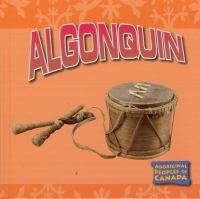 |
Algonquin. (Aboriginal Peoples of Canada).
Heather Kissock.
Calgary, AB: Weigl, 2011.
24 pp., pbk. & hc., $10.95 (pbk.), $23.95 (hc.).
ISBN 978-1-55388-653-2 (pbk.), ISBN 978-1-55388-647-1 (hc.).
Subject Heading:
Algonquin Indians-Juvenile literature.
Grades 2-4 / Ages 7-9.
Review by Gail Hamilton.
**½ /4
|
| |
|
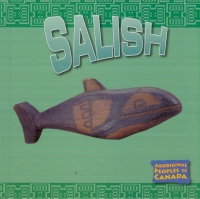 |
Salish. (Aboriginal Peoples of Canada).
Christine Webster.
Calgary, AB: Weigl, 2011.
24 pp., pbk. & hc., $10.95 (pbk.), $23.95 (hc.).
ISBN 978-1-55388-652-5 (pbk.), ISBN 978-1-55388-646-4 (hc.).
Subject Heading:
Salish Indians-Juvenile literature.
Grades 2-4 / Ages 7-9.
Review by Gail Hamilton.
**½ /4 |
| |
|
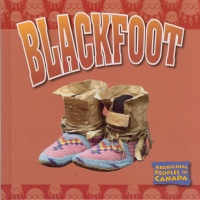 |
Blackfoot. (Aboriginal Peoples of Canada).
Anna Rebus.
Calgary, AB: Weigl, 2011.
24 pp., pbk. & hc., $10.95 (pbk.), $23.95 (hc.).
ISBN 978-1-55388-654-9 (pbk.), ISBN 978-1-55388-648-8 (hc.).
Subject Heading:
Siksika Indians-Juvenile literature.
Grades 2-4 / Ages 7-9.
Review by Gail Hamilton.
**½ /4 |
| |
|
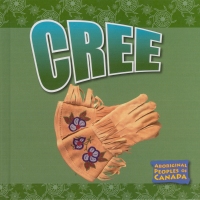 |
Cree. (Aboriginal Peoples of Canada).
Erinn Banting.
Calgary, AB: Weigl, 2011.
24 pp., pbk. & hc., $10.95 (pbk.), $23.95 (hc.).
ISBN 978-1-55388-651-8 (pbk.), ISBN 978-1-55388-645-7 (hc.).
Subject Heading:
Cree Indians-Juvenile literature.
Grades 2-4 / Ages 7-9.
Review by Gail Hamilton.
**½ /4 |
| |
|
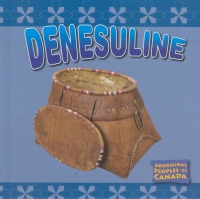 |
Denesuline. (Aboriginal Peoples of Canada).
Carol Koopmans.
Calgary, AB: Weigl, 2011.
24 pp., pbk. & hc., $10.95 (pbk.), $23.95 (hc.).
ISBN 978-1-55388-655-6 (pbk.), ISBN 978-1-55388-649-5 (hc.).
Subject Heading:
Chipewyan Indians-Juvenile literature.
Grades 2-4 / Ages 7-9.
Review by Gail Hamilton.
**½ /4 |
| |
|
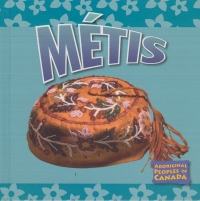 |
Métis. (Aboriginal Peoples of Canada).
Jennifer Howse.
Calgary, AB: Weigl, 2011.
24 pp., pbk. & hc., $10.95 (pbk.), $23.95 (hc.).
ISBN 978-1-55388-650-1 (pbk.), ISBN 978-1-55388-644-0 (hc.).
Subject Heading:
Métis-Juvenile literature.
Grades 2-4 / Ages 7-9.
Review by Gail Hamilton.
**½ /4 |
| |
|

excerpt:
The Salish used weirs to catch fish. These fencelike structures blocked fish from swimming up or down the river. The fish became crowded in one area. This made it easy for the Salish to spear a large number of fish at a time.
Digging sticks were made from hard wood. They were sharpened to a point. Then, a horn or antler was added to the end. These sticks were used to dig up dirt when planting seeds or to dig up clams to eat. (From Salish.)
These short, 24-page books are part of the 13-volume "Aboriginal Peoples of Canada" series. Topics included in the titles are identical and occur in the same sequence: people (which explains the geographical part of Canada where the people once lived and where they currently live), homes, clothing, hunting and gathering, tools (both for hunting and household use), transportation, music and dance, a legend, art, and, finally, a related activity to try (cooking and crafts). The text gives very basic information, printed in a simple font. Occasionally, text "ovals" and net links appear, the former providing more specific facts about the topic, and the latter providing a URL for a web site. One example of a net link for the music and dance section is a web site that allows students to listen to Algonquin songs. What is interesting is that, if one were to read all of the titles, one would find many similarities among the various First Nations groups, particularly in their dress, legends, music and food.
The series' minor flaw is the activity page. It is doubtful that youngsters will want to make wild nut soup (it requires three cups of hazelnuts) from the recipe included in Algonquin, or soapberry ice cream (where does one find soapberries?) from the Salish title, and the craft ideas only mimic the real thing and look nothing like the original product. Using a balloon to make a drum or cotton balls to resemble moose hair tufting might give readers the general idea, but, somehow, it falls a bit short.
Illustrations consist of coloured photos (several of them repeated within the series) and drawings, while tone-on-tone bands, running along the bottom of each page, depict a pattern related to the featured group. A table of contents and a very brief glossary and index are provided.
Algonquin highlights the First Nations people who lived in the Ottawa Valley for over 600 years, having moved there from the Atlantic coast. This group is known for its dome-shaped bark wigwams, birchbark food containers and baskets, snowshoes, birchbark canoes, and clothing fashioned from animal hides and decorated with shells, porcupine hair and quills. Common foods were deer, birds, snowberries, wild plants, nuts and maple syrup. The legend tells how Nanabozho created the land with the help of muskrat.
The Blackfoot Confederacy is made up of three main groups- the Siksika, Kainai and Piikani. They live in Alberta and Montana. In Blackfoot, there is information about teepee construction, clothing made from elk and bison hides and decorated with feathers and quills, the Blackfoot's reliance on the bison, wild onions, berries, camas bulbs and root vegetables for food, tools, such as stone arrowheads and bison hide shields (so strong that they could stop an arrow), and the travois. The Blackfoot shared their music, stories and dances at powwows, and they shared their history by means of rock paintings or painting on animal hides, known as winter counts. A pemmican recipe is provided for readers to try.
Formerly divided into three different groups- the Woods, Plains and Swampy- the Cree people settled in Quebec, Ontario, Manitoba, Saskatchewan and Alberta. Those who lived in treed areas lived in dome-shaped wigwams, while those who inhabited the prairies lived in teepees. Topics in Cree include the use of feather fans, neck chokers and hair roaches as clothing accessories, drums and tiny bells attached to clothing for music making, utensils crafted from wood, shells, or the horns of moose, deer and bison, and the use of birchbark containers. The legend explains how the Qu-appelle Valley got its name. Instructions are provided for making a birchbark container.
Denesuline features the people who inhabit the subarctic tundra from Labrador to British Columbia. They erect teepees in summer, live in wigwams during the winter, and use ridge-pole lodges for short hunting trips. To keep out the cold, their clothing consists of moose or caribou parkas, embroidered mittens and moose hide moccasins. Clothing decorations are often porcupine quills tinted with plant dyes. The Denesuline rely on caribou, bear meat stew, beaver, rabbit, fish and huckleberries for food, with the fish being caught in caribou skin nets. Modes of transportation include spruce or birchbark canoes, larger boats made from moose skins stretched over a spruce frame, snowshoes and dogsleds. Readers can make a drum out of a balloon and an embroidery hoop.
The Métis have mixed ancestry- First Nations and European. In the past, according to Métis, they lived in log and sod houses, using teepees when they travelled. They relied heavily on the bison, not only for food, but also for the bones to make tools and weapons, the skin for making buckets, ropes and bags, and the horns for making spoons and ladles. York boats and Red River carts (which could be used as rafts on occasion) were their preferred method of getting from place to place. Bison, bannock, berries, fish, deer, and tea steeped from leaves and flowers of herbs and trees were their main foods. The Métis were known for their fiddle music, jigs, and colourful beaded hats and woven sashes. Detailed flower and vine decorations, made from quills, glass beads or moose or caribou hair tufting, adorned their clothing.
The Salish lived in the area of northwestern U.S.A. and southern British Columbia, the Coast Salish on the southern coast, and the Interior Salish further inland. Their waterproof longhouses, made from red cedar planks, had sleeping platforms, storage shelves, firepits and earthen floors covered with mats. They wore cedar ponchos on rainy days, cedar bark aprons and fur capes. Quills, teeth, shells and bear claws were used as decorations on clothing and also as necklaces, along with beaver teeth and snakeskin. Their food source came primarily from the ocean and consisted of salmon and clams, though they also ate soapberries, deer and root vegetables. Whale oil was used to preserve their canoes and for storing berries. Other topics in Salish include innovative ideas, such as using sharpened seashells as knives, wet sand as sandpaper to smooth the blades, and bark twine to attach the blades to the handles. This group is also well-known for its totem poles, cedar baskets and cedar box drums.
The books in this series provide just enough basic information for young readers, but not too much detail. Photos, however, truly enhance the text and offer readers a glimpse into the lifestyles of the First Nations people, past and present.
Recommended.
Gail Hamilton is a former teacher-librarian in Winnipeg, MB.

To comment
on this title or this review, send mail to cm@umanitoba.ca.
Copyright © the Manitoba Library Association. Reproduction for personal
use is permitted only if this copyright notice is maintained. Any
other reproduction is prohibited without permission.
NEXT REVIEW |
TABLE OF CONTENTS FOR THIS ISSUE
- March 11, 2011.
AUTHORS |
TITLES |
MEDIA REVIEWS |
PROFILES |
BACK ISSUES |
SEARCH |
CMARCHIVE |
HOME |





